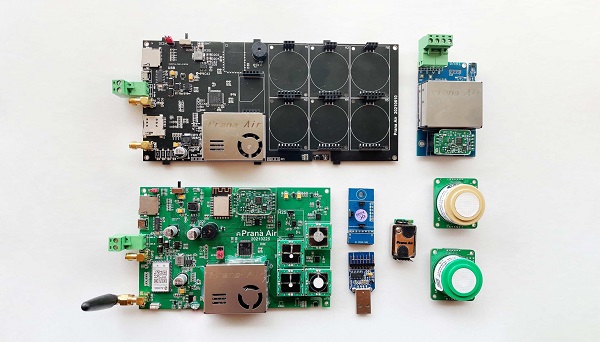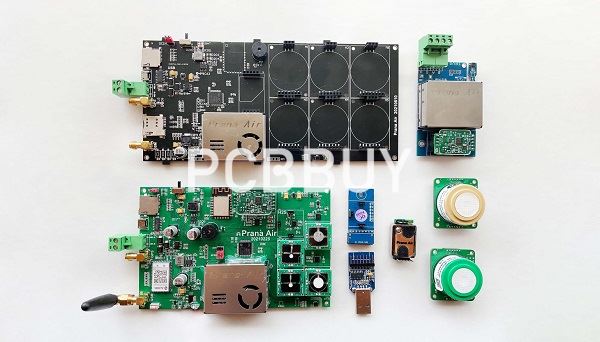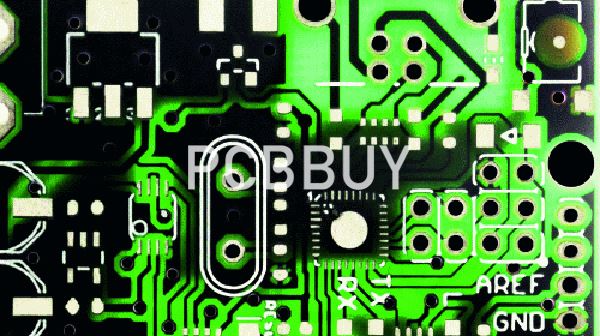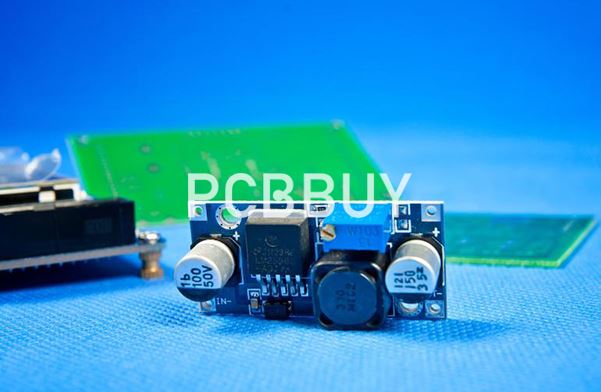What is LPI Solder Mask during the PCB Manufacturing Process?
By:PCBBUY 10/08/2022 13:38

Since the introduction of Liquid Photo Imageable Solder Masks (LPI) in the late 1980's, it has continued to be applied on printed circuit boards, such as rigid, rigid/flex, and flexible PCBs. LPI solder mask is by far the most common type of solder resist used today. LPI is more reliable, can be printed very accurately, and makes better contact with the surface of the board and the copper features on which they're applied to protect.

LPI solder mask is an epoxy based material, so it is very durable and nearly impossible to remove once they have been cured. There is a variety of methods to apply LPISM ink, such as screen printing, curtain coating, electrostatic spray, air spray and so on. If you want to learn more information of PCB LPI solder mask, please check and read the content below.
What is Liquid Photo-Imageable Solder Mask?
If you have ever undertaken the task of PCB Assembly on a board without Solder Resist, then you are likely well-acquainted with its importance. In addition to giving the PCB its distinctive colour, solder masks also perform the much more important job of preventing soldering from flowing onto undesirable areas of the board, facilitating a High Quality PCB Assembly.
Given the importance of this aspect of your board, it is only natural to wonder how one type of solder mask might differ from another. Once again, Solder Mask Colour is not the only variable at play here; there are three main types of solder resist that exist on the market today: Silkscreened Epoxy, Dry-Film, and Liquid Photo-Imageable (LPI).
At Bittele Electronics, we provide LPI Solder Mask as one of our Standard Price PCB Options, at no additional cost. We encourage our clients to use this form of mask since it is not only the most convenient in terms of the PCB Assembly Process, but more importantly it is the most robust and high-quality option for your PCBs. The only case where we do not regularly use LPI solder mask is for Flexible PCB Assembly, which requires a special coverlay solution.
LPI solder masks are composed of an ink compound that can be either silkscreened or spray-coated onto the PCB. The LPI solder mask technique is commonly used with the Hot Air Solder Leveling (HASL) and Electro-less Nickel, Immersion Gold (ENIG) surface finishes, and its application process requires a clean environment, free of particles and contaminants. After an LPI solder mask is applied, and the PCB is completely covered on both sides with the solder mask, the next stage in the process is curing.
Unlike other types of solder mask, LPI inks are sensitive to UV light, and can be cured after a short “tack cure cycle”, making use of UV light exposure. This curing process cements the solder mask in place permanently, and the durable material is extremely difficult to remove from the board afterward, lending to long shelf life.

To ensure that the LPI mask is cured in the proper locations, negative film stencils of the top and bottom solder mask Gerber Files are printed using a contact printer. The film sheets are printed with black sections corresponding to any areas of the PCB that are to be left uncoated for soldering, or otherwise free of solder mask. For Complete PCB Assembly projects, this is very efficient, since we already have to create the positive-image stencils for paste application.
The entire PCB is then exposed to a UV light, which causes the solder mask to cure and harden in any exposed areas, but has no effect of those areas shielded by the black film. After the curing process is complete, any excess solder resist can be washed off of the film-shielded sections, leaving only the desired areas covered. This is generally one of the final steps in PCB Fabrication, proceeded only by the application of surface finish and PCB Silkscreen.
What is the process of LPI Solder Mask of PCB?
In this section, we delve into LPI solder mask application. Note that the general process remains similar for all types of solder mask, exempting application techniques:
Clean PCB
The PCB must undergo thorough cleaning to remove any trace of contaminants or oxidation, and then dried. It can be physically scrubbed or covered in a cleansing solution.
Apply LPI
The exact method of application depends on one question: what material is solder mask?
A Dry Photo Imageable solder mask can only be applied via vacuum lamination. In contrast, LPI ink is more versatile due to the nature of the solution. There are four choices: curtain coating, electrostatic spray, air spray, and silk screen printing.
In curtain coating, the PCB travels through a “curtain” of ink falling through a lot. This method is ideal for more complex PCBs, as it enables rapid application with little ink loss.
Electrostatic spray application entails the ink getting atomized in a rotating bell. As the LPI develops a negative charge, it is attracted to the PCB, which is earthed. Unfortunately, this technique tends to result in a less uniform coating. Air spray is straightforward: the LPI solder mask emerges from one or more spray nozzles. A drawback is that overlap (and LPI waste) can occur with multiple spray guns.
With silk screen printing, a squeegee blade deposits ink on the PCB through a tensioned mesh. Even though these printers are advanced, a successful application depends on correctly controlling the settings (e.g., speed, pressure, etc.).

Tack Dry
The mask-coated PCB gets placed into an oven to tack-dry. This step allows for easier handling during the remainder of the process.
Add Protective Film
Once dry, a film is printed with emulsion to cover the areas from which the solder mask will be removed. After all, you don’t want to get the mask on your solder pads. The transparent film indicates areas where the solder mask should adhere to, whereas black film shields the areas you don’t want masked.
Cure LPI
The second-to-last step is UV light curing to affix the solder mask to the PCB permanently. If you want to go the DIY route, you’re probably asking: how do you use UV solder mask? Don’t worry; you can follow the same approach for UV light curing. Use the applicator to smear the LPI solder mask on your PCB and allow it to cure for the specified period.
Industry Category











